
A storm and trailing cold front will continue to slowly move through the Gulf Coast and Southeast U.S. through this weekend with widespread rain showers and isolated thunderstorms. A fast-moving clipper storm may bring several inches of snow to the north-central Plains, Midwest, eastern Great Lakes, and Northeast regions this weekend. Read More >

According to NASA, a total solar eclipse happens when the Moon passes between the Sun and Earth, completely blocking the face of the Sun. People located in the center of the Moon's shadow when it hits Earth will experience a total solar eclipse. Learn more about the different types of eclipses here.
View larger map Data Source: NASA Scientific Visualization Studio
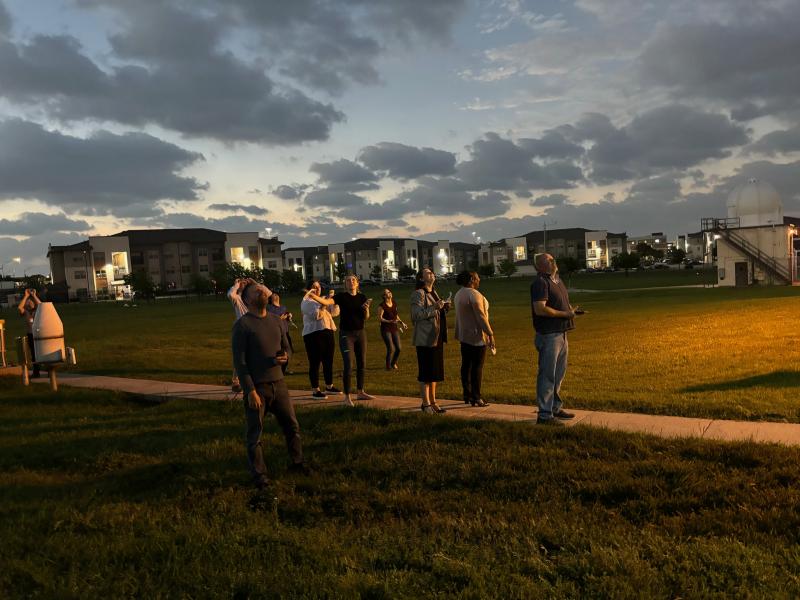
NWS Fort Worth staff observing the Total Solar Eclipse during totality.
The image to the left shows the visible satellite loop as the moon shadow traveled across Texas. While there was a brief reduction in the low cloud cover as the shadow moved through, clouds began to develop again in the afternoon as storms were expected later.
How much did the temperature drop during the eclipse? Our office recorded a drop of 3.3ºF during totality. The image to the right also shows the decrease in solar radiation.
|
|
Here's a look at the eclipse from our office earlier today as the shadow passes over. Totality was a little over 2 minutes at the office. #txwx #Eclipse2024 pic.twitter.com/Y2OmbbpRpj
— NWS Fort Worth (@NWSFortWorth) April 8, 2024
A total solar eclipse occurs about once every 18 months. However, at any given location, it may be several centuries between occurrences. Before the April 8th, 2024 eclipse, the most recent total solar eclipse within North or Central Texas was in 1878, and there won't be another in our region until 2317. Hearne (Robertson County), which missed out on totality in 2024, will not experience a total solar eclipse between 1286 and 2343, a period of more than a thousand years. To say this was a once-in-a-lifetime experience would be understating its rarity.
The map below shows the date of the previous total solar eclipse in your location (prior to 2024) and the next future occurrence (if available). Beneath the map is a table with this information. (Occurrences of partial and annular eclipses are not considered here.)
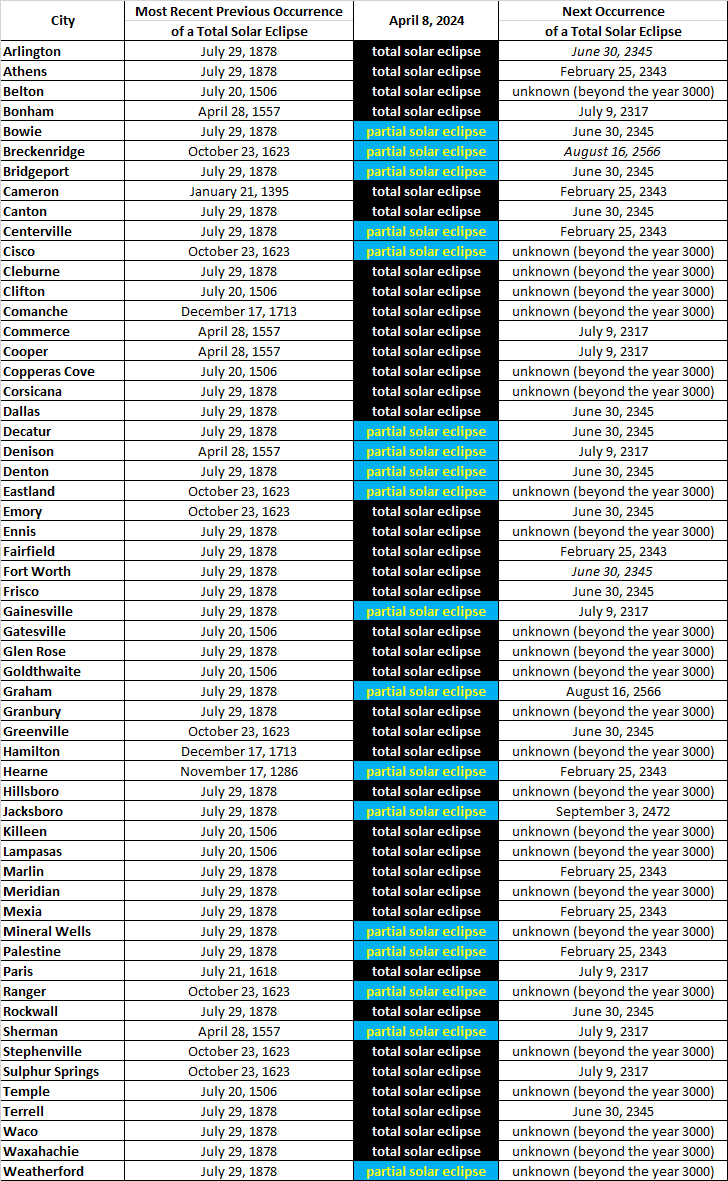
italics indicate total solar eclipse only occurs within part of the city
During the first half of April, the early afternoon frequently has clouds. Clear or mostly clear skies occur less than 30% of the time, but mostly cloudy or overcast skies resulting in poor viewing conditions only occur around 35% of the time. Even if clouds are present, many aspects of an eclipse may still be visible. In other words, in a majority of the scenarios shown in the pie chart below, the sky condition may still allow for adequate eclipse viewing.
On average, better sky conditions occur in the Hill Country with greater cloud cover in Northeast Texas. Although cloud cover tends to be greater during the cold season when El Niño conditions are present, the difference during April is negligible across North and Central Texas.
|
|
Maps created by Brian Brettschneider, NOAA
On April 8, normal high temperatures are in the 70s with normal low temperatures in the 50s. Record highs are generally in the 90s while record lows are in the lower 30s.
The pie charts show the distribution of high temperatures during the first half of April. High temperatures in the 80s are more common in Central Texas and less common in Northeast Texas. Highs in the 70s dominate North Texas. Cooler days (highs in the 60s or lower) are more common in Northeast Texas where they occur nearly 30% of the time. Highs below 70º occur less than 20% of the time in Dallas/Fort Worth, Waco, and Killeen.
Rain chances are somewhat greater in Northeast Texas, but precipitation occurs about a third of the time regionwide. Thunderstorms occur more than 20% of the time in Northeast Texas, but the chance of thunder is as low as 14% in Killeen. Severe weather peaks during the spring in our region, and those occurrences of thunder may include large hail, damaging winds, and flooding. The incidence of tornadoes also peaks during the spring in North and Central Texas. As a result, residents and visitors alike are urged to keep abreast of the weather.
|
|
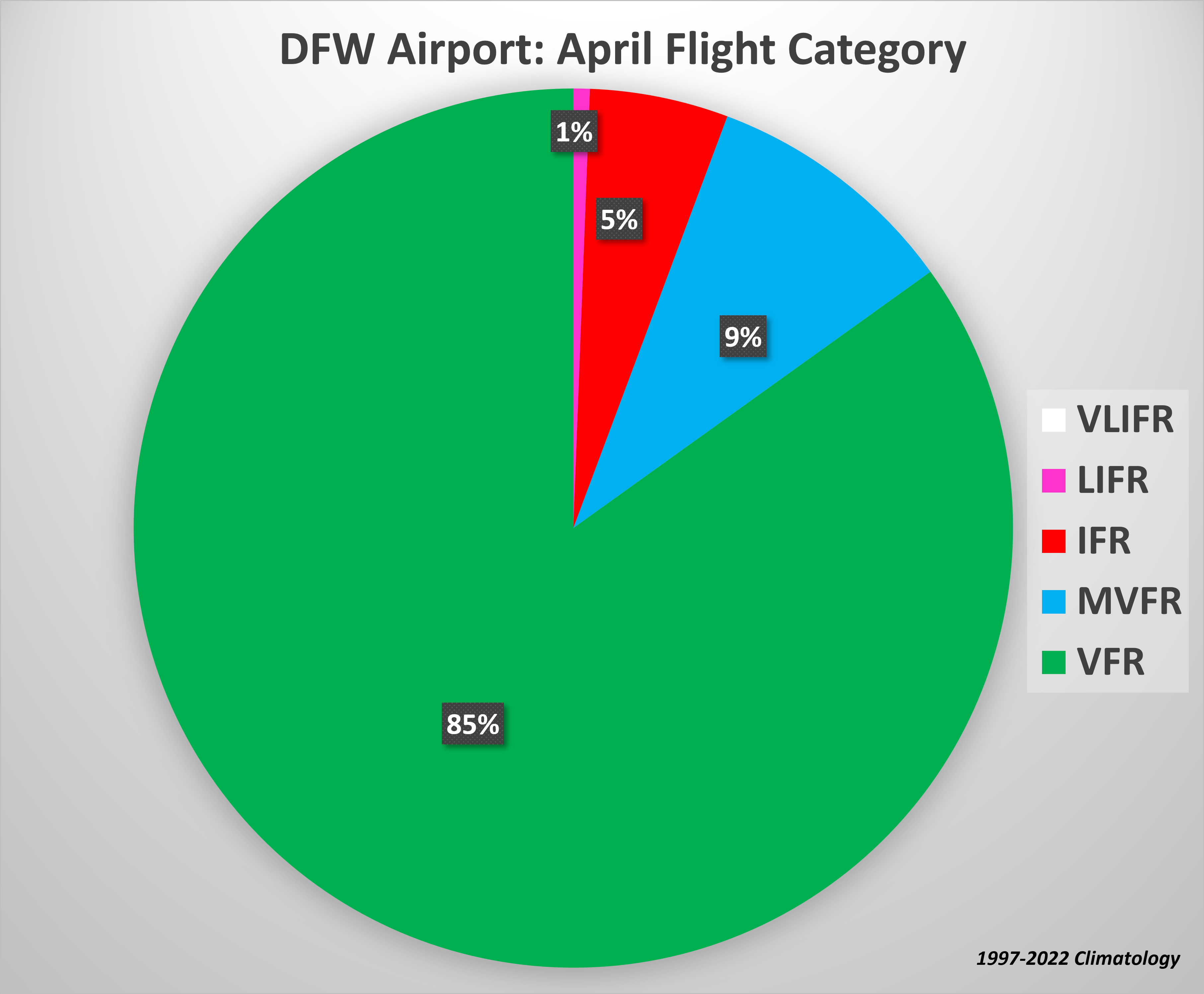
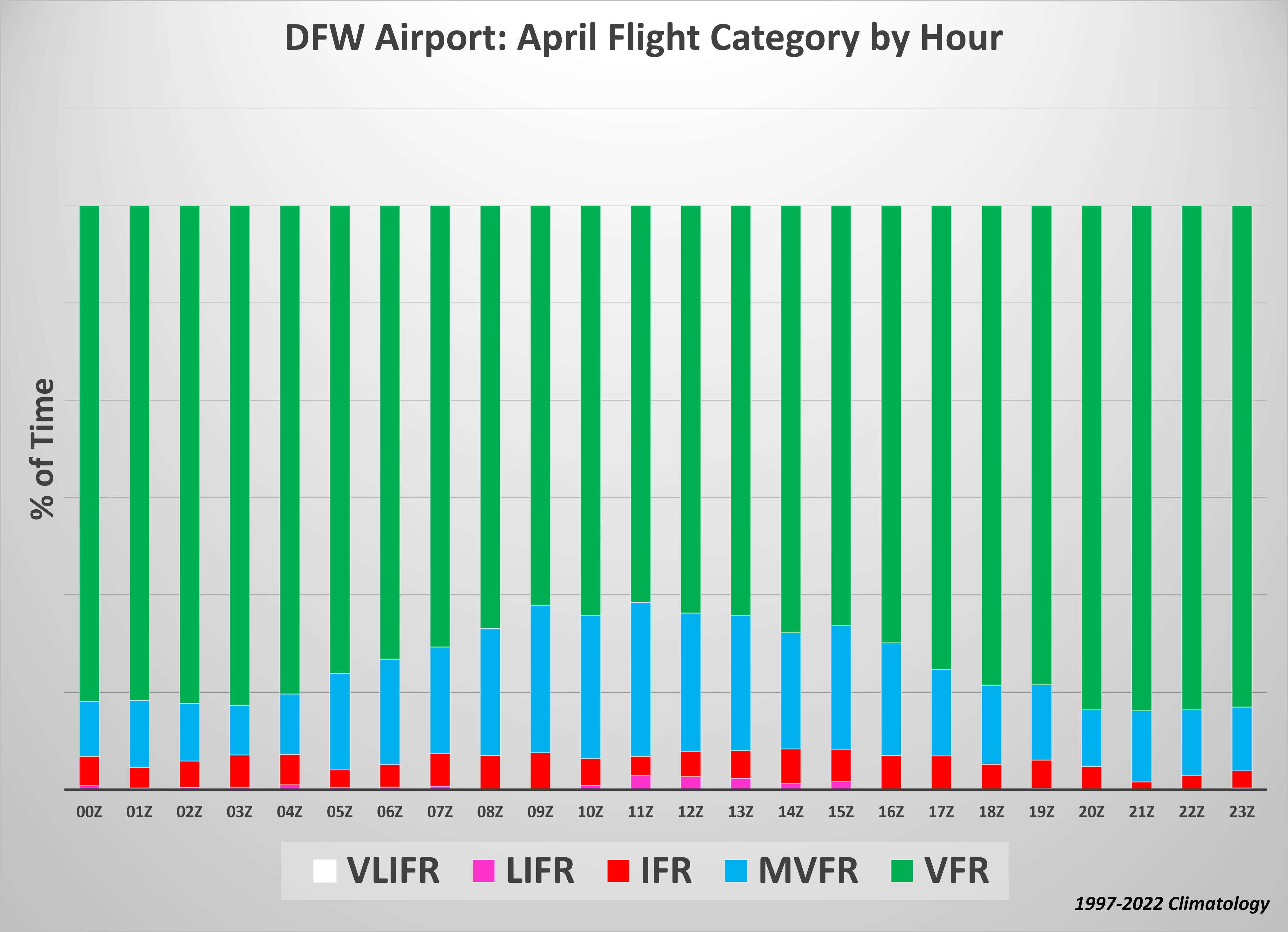
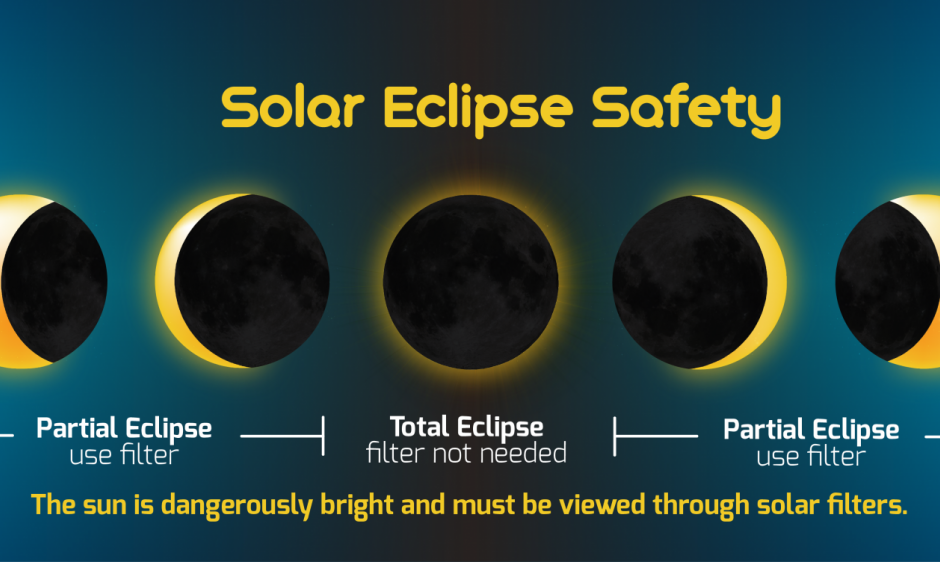
Credit: NOAA, Space Weather Prediction Center
|
|
|
|
|
|
|
|
|